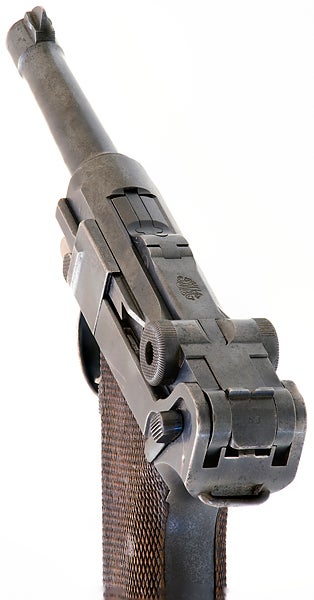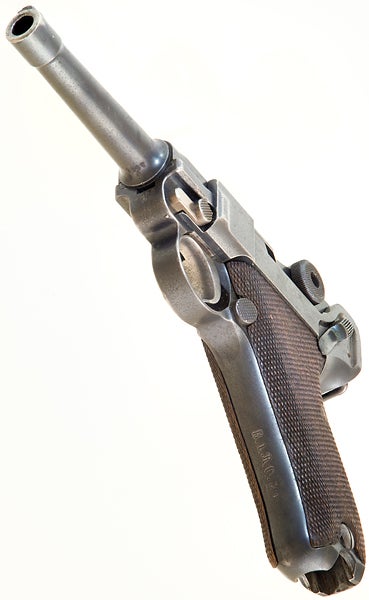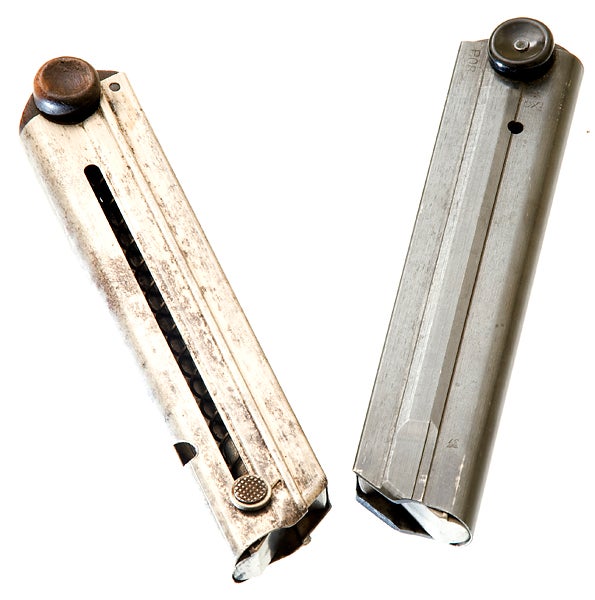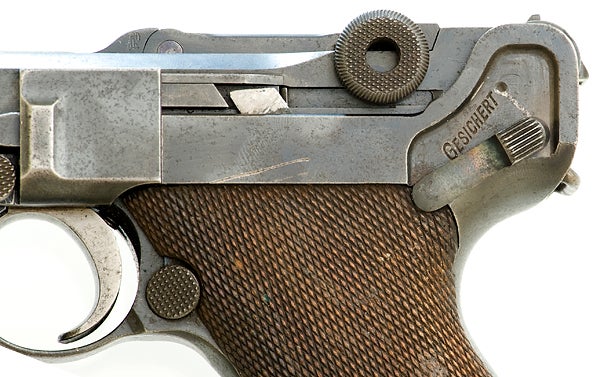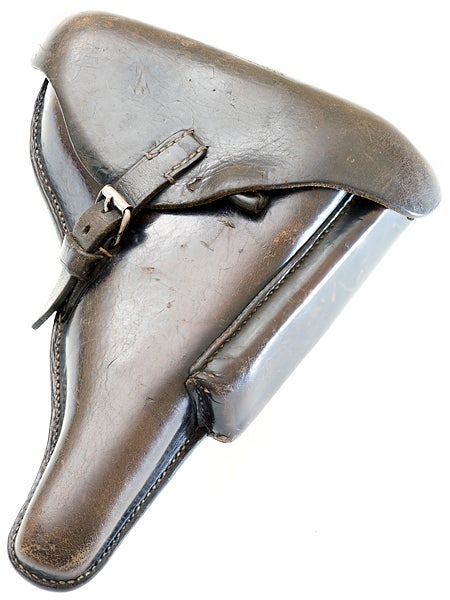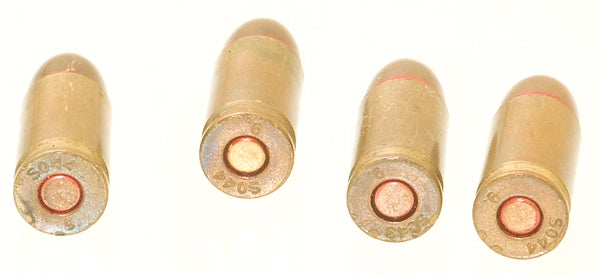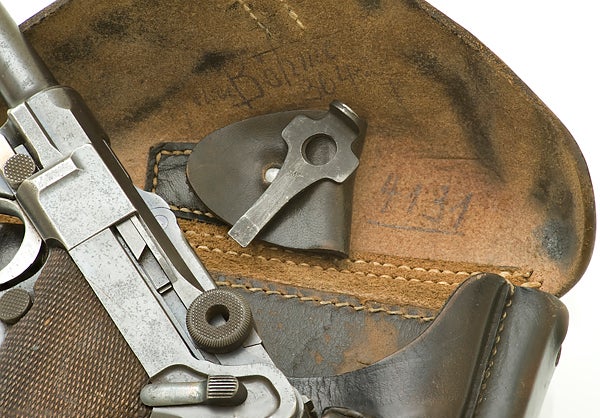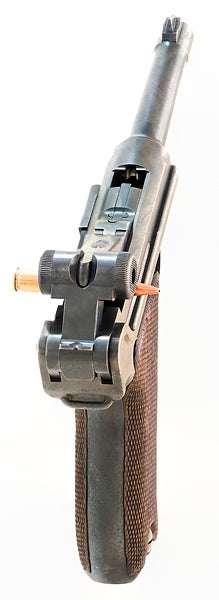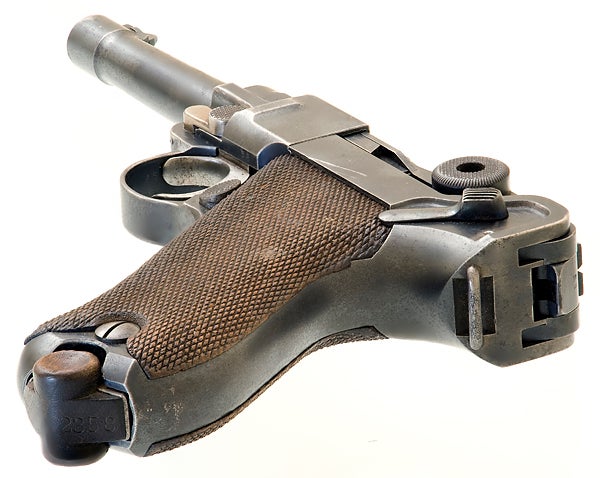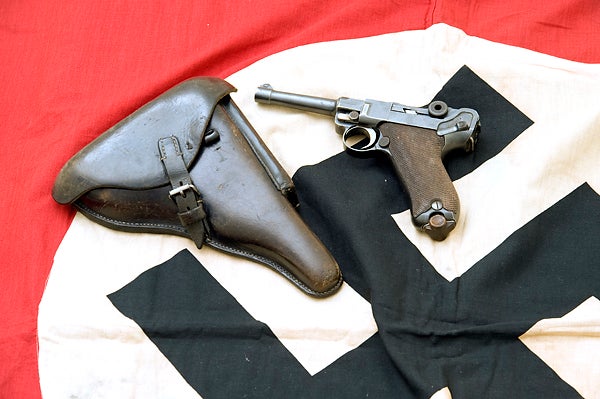This guest post and accompanying photographs are contributed by a guest writer, Alton Chiu. Alton currently writes for Small Arms Review, and has done a thorough job of photographing and writing about a Luger that he recently came across through a mutual friend of his. Not only does he describe the captured Luger, but he also researched and points out that it was most likely used in the First World War, as well as the Second, where it was captured by an American Soldier in the 3rd U.S. Army. Although we can’t definitively say this, but I can’t imagine it being not too far of a stretch to assume that the German officer it was “liberated” from, had the handgun inherited or gifted to him from a family member or friend who served in the First World War with the Luger.
James Bullock didn’t talk about the war much. Like many in the Greatest Generation, he stepped out of the economic frying pan of the 1930s and into the martial fire of the 1940s. After helping to liberate Europe, he settled down in Southern California and raised a loving family. Later in life, he told humorous sketches about his time as an artilleryman. In one occasion when taking counter-battery fire, James dove for a shallow depression only to find a number of soldiers beating him to it. By the time he reached the modicum of a shelter, he was at the top of the dog pile and ended up above ground level.
Jovial anecdotes aside, James never recounted in detail as to how the Nazi banner or the Luger P08 pistol came to be captured. He only related to his family that he happened across a deceased German officer and relieved him of the sidearm. As an artilleryman in Patton’s Third Army, James sometimes served as a forward observer and it was likely that he encountered the Luger pistol on such duties. This article features that piece of history.
The Pistol
The P08 that James captured is a 1908 commercial product from DWM which was accepted for service with the army and likely saw action during WWI. This can be inferred from the marking on the front strap reading B.1.R.C.3.6 which translates to Bayerisches 1. Reserve-Kavallerie-Regiment, 3 Eskadron, Waffe 6 (Bavarian 1st Reserve Cavalry Regiment, 3rd Squadron, Weapon 6) (Footnotes (1),(2)). The astute reader will notice that modern German spells Cavalry with a K. The German Orthographic Conference of 1901 changed spelling largely based upon the Prussian school, with many “hard” Cs becoming Ks, and “soft” Cs becoming Zs. Given the federal nature of the German Empire and the love of tradition in military organizations (e.g. British rifle regiments still carry the tradition of fixing swords rather than bayonets, dating from the Napoleonic era Baker rifle), it is not surprising that the Bavarians spelled Cavalry with a C. The author thanks Tobias Ecker for his research on this.
The wood magazine buttplate, featuring a serial number matching that of the pistol, is also consistent with WWI vintage manufacture. The safety is marked Gesichert. The number 58 marked at the rear of the toggle under the rear sight is the last two digits of the serial number. The full serial number was marked in matching pair on the frame and barrel, with a cursive b denoting that one should add 20,000 to the 4-digit as-marked number for the full serial number.
The WWII era holster captured along with the pistol has larger letters P08 in the backside to indicate that it is meant for the Luger rather than the Walther P38. Also visible are the lettering of dtu. 41 and WaA183; these are Waffenamt codes indicating manufacture by G. J. Ensink, Ohrdruf, Thüringen in 1941. The inside flap has the number 4131 on the right and 364 above the tool pouch. The significance of the numbers as well as the illegible letters is lost to the author. The holster also held a disassembly tool that looks to be stamped with a faint eagle and the numbers 655.
James also passed down some 9x19mm ammunition that must have been purchased post-war. Their headstamps read SO43 or SO44, and 9. These 9x19mm cartridges were manufactured by Sako AB of Riihimaki, Finland in 1943 and 1944. The green sealant is the original loading with corrosive primer, and the red sealant indicates that it was converted to non-corrosive.
The Legacy
Later in life, the Bullock family became friends with Yvonne who was one of many Jewish children in occupied France. On the 70th Anniversary of D-Day, she left this note by the grave of James and Lucille Bullock.
Dear Jim,
Thank you so very much for all you did to liberate France and especially us, Jewish kids and adults! Merci a thousand times! We love you, and all of you.
Yvonne.
Accompanying Footnotes-
(1)Davis, Aaron. Standard Catalog Of Luger. 1st ed. Iola: Gun Digest, 2006. 15. Print.
(2)Görtz, Albrecht Wacker-Joachim. Handbuch Deutscher Waffenstempel Auf Militär Und Dienstwaffen 1871-2000. 1st ed. Herne: VS-, 2005. 81. Print.
 Your Privacy Choices
Your Privacy Choices



